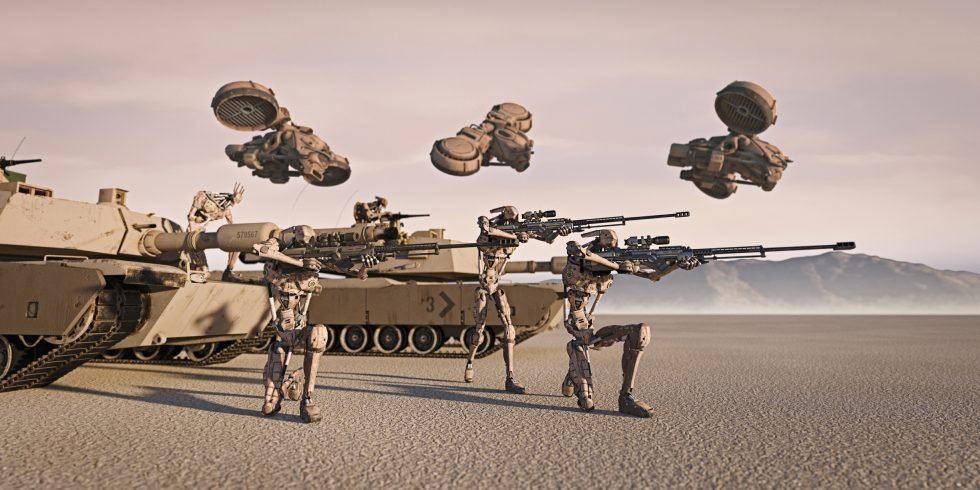The crackle of a radio warning and the buzz of a drone overhead are becoming as familiar on the India–Pakistan border as the distant rumble of artillery. In recent flare-ups, cutting-edge technologies have taken center stage. Radar operators scramble to track hostile drones, air defense batteries light up the night sky intercepting incoming missiles, and cyber teams battle unseen foes on the internet.
Modern conflict between India and Pakistan – two nuclear-armed rivals with a volatile history – is now waged not just with soldiers and tanks, but with silicon chips, satellites, and software. This high-tech battlefield holds promise and peril in equal measure. On one hand, innovation offers unprecedented ways to protect civilians and prevent all-out war. On the other, the very same tools heighten new risks and ethical dilemmas.
In this comprehensive report, we explore how technology is supporting warfighting and civilian protection in the Indo-Pak context. From drone warfare and missile defense shields to cyber warfare, satellite surveillance, public safety systems, humanitarian logistics, and AI on the battlefield, we take a holistic look at the dual nature of innovation. The ongoing India–Pakistan conflict is our case study – a lens through which to understand how 21st-century tech is shaping national security and what it means for ordinary people caught in the crossfire.
Drone Warfare: A New Battlefield in the Skies
Not long ago, cross-border raids and infiltration in Kashmir involved militant squads sneaking through the mountains at night. Today, a whine in the sky could signal a drone carrying out that mission instead. Both India and Pakistan have increasingly turned to unmanned aerial vehicles (UAVs) for reconnaissance and even attack, opening a new battlefield in the skies.
India’s military and security forces have responded by ramping up counter-drone measures and surveillance. Along the Punjab border – a hotspot for smuggling and militant incursions – the Border Security Force (BSF) has been in a cat-and-mouse game with Pakistani drones.
Some drones are not merely couriers but combatants. From a civilian safety perspective, drone warfare is a double-edged sword. On one hand, UAVs enable pinpoint strikes, potentially reducing collateral damage. On the other, drones in the wrong hands pose a dire threat to civilians.
India is innovating fast to counter the drone danger. Anti-drone jamming systems, radars, and even laser-based weapons are under development. Pakistan for its part is reportedly working on counter-drone tech too. The cat-and-mouse game in the skies is on – and it’s a race where each side’s innovation could directly save lives or put them at risk.
Missile Defense Shields: Protecting Cities from Above
Both India and Pakistan maintain sizeable ballistic missile arsenals. This reality has made missile defense a top priority. India has invested heavily in a multi-layered air and missile defense network, integrating imported and indigenous technology into a comprehensive shield.
Pakistan, not to be left behind, has started fielding modern air defenses of its own, though on a smaller scale. Missile shields also bring strategic conundrums, potentially upsetting the delicate offense-defense balance.
Cyber Warfare: Battles in the Digital Domain
While soldiers guard the borders, an invisible war rages in cyberspace. Cyber warfare between India and Pakistan has been a simmering front for years. Cyber capabilities can bolster security defensively but the ethical line in cyber warfare is blurry. The digital domain is now irrevocably part of the conflict.
Eyes in the Sky: Satellite Surveillance and Reconnaissance
Today, satellite surveillance has revolutionized how both countries plan their defenses. India and Pakistan’s frequent border skirmishes and military mobilizations are now tracked in real time by satellites.
Satellite surveillance can enable calibrated military responses enhancing stability, but also introduce vulnerabilities, like anti-satellite threats.
Civil Defense: Technology for Public Safety in Wartime
Alongside offensive and defensive systems, India and Pakistan have invested in public safety technologies to shield their populations if conflict breaks out. Modern communication networks now complement age-old civil defense tactics like sirens, blackouts, and bunkers.
Technology also helps manage the aftermath when violence does occur, leveraging integrated command centers, mobile text alert systems, and drones for rescue missions.
Humanitarian Aid and Logistics: Tech to the Rescue
From speeding up the delivery of relief supplies to keeping track of refugees, technology helps provide humanitarian aid more effectively. Drones for humanitarian logistics, AI for relief logistics management, and digital databases for tracking displaced persons are transforming relief operations.
The ethical dimension remains crucial, as humanitarian technology can blur into military use, requiring transparency to maintain trust.
Battlefield AI: The New Force Multiplier
Artificial intelligence (AI) has emerged as a transformative force in military affairs. AI-powered systems are enhancing reconnaissance, decision-making, and combat effectiveness. India is rapidly experimenting with AI-driven surveillance, drone swarms, robotics, and automated maintenance systems.
The darker side includes lethal autonomous weapon systems (LAWS), sparking intense ethical debates and calls for regulation to ensure human accountability remains paramount.
The Double-Edged Sword: Balancing Innovation, Security, and Ethics
Across the India–Pakistan divide, technology has become a critical factor in war and peace. Technological innovation carries tremendous potential for security and civilian protection but introduces new dangers and uncertainties, such as arms races, rapid escalation, and ethical dilemmas regarding autonomous systems.
Strategic stability concerns are balanced against defensive innovations, international partnerships, and norms promoting responsible use of technology. Technology’s transparency also influences public narratives and could enhance peace movements.
The goal remains lasting peace, where technology facilitates cooperative problem-solving rather than conflict escalation.
Ultimately, the rise of technology in the India–Pakistan conflict is intertwined with promise and peril. How these technologies are used will determine the fate of millions. With restraint and guided by human security values, technology could usher in an era of reduced conflict and better protection of civilians.
The tools of war have changed dramatically, but so have the tools of peace. Technology’s role in warfare could paradoxically drive humanity toward valuing peace more—precisely because the stakes are so high.

